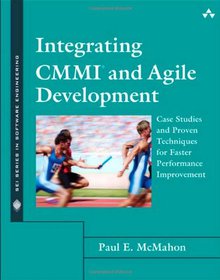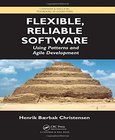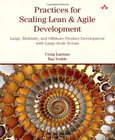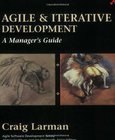Integrating CMMI and Agile Development
Case Studies and Proven Techniques for Faster Performance Improvement

Book Details:
| Publisher: | Addison-Wesley Professional |
| Series: | Addison Wesley , Performance |
| Author: | Paul E. McMahon |
| Edition: | 1 |
| ISBN-10: | 0321714105 |
| ISBN-13: | 9780321714107 |
| Pages: | 368 |
| Published: | Aug 19 2010 |
| Posted: | Nov 19 2014 |
| Language: | English |
| Book format: | |
| Book size: | 2.86 MB |
Book Description:
'This book will be a great help to a variety of organizations figuring out how best to implement CMMI, including large and small enterprises, even if their starting point is not 'Agile.' All-in-all, this contains 'pearls of wisdom' that will make a much-appreciated contribution to the software engineering community.' Mike Konrad, Chief Architect, CMMI, Software Engineering Institute; coauthor, CMMI: Guidelines for Process Integration and Product Improvement, Second Edition 'This book will challenge many of your (mis)understandings about both Agile delivery and CMMI. Paul thoughtfully applies his years of practical experience to help bridge two disparate communities who are working towards the same goalimproving an organization's IT productivity. It's about time someone wrote a book like this.' Scott W. Ambler, Chief Methodologist for Agile and Lean, IBM Rational; author, Agile Modeling; and coauthor, Enterprise Unified Process Many organizations that have improved process maturity through Capability Maturity Model Integration (CMMI) now also want greater agility. Conversely, many organizations that are succeeding with Agile methods now want the benefits of more mature processes. The solution is to integrate CMMI and Agile. Integrating CMMI and Agile Development offers broad guidance for melding these process improvement methodologies. It presents six detailed case studies, along with essential real-world lessons, big-picture insights, and mistakes to avoid. Drawing on decades of process improvement experience, author Paul McMahon explains how combining an Agile approach with the CMMI process improvement framework is the fastest, most effective way to achieve your business objectives. He offers practical, proven techniques for CMMI and Agile integration, including new ways to extend Agile into system engineering and project management and to optimize performance by focusing on your organization's unique, culture-related weaknesses.
Download Link:
Related Books:
Flexible, Reliable Software
Using Patterns and Agile Development
Flexible, Reliable Software: Using Patterns and Agile Development guidesstudents through the software development process. By describing practical stories, explaining the design and programming process in detail, and using projects as a learning context, the text helpsreaders understand why a given technique is required and why techniques must be combined to overcome the challenges facing software developers. The presentation is pedagogically organized as a realistic development story in which customer requests require introducing new techniques to combat ever-increasing software complexity. After an overview and introduction of basic terminology, the book presents the core practices, concepts, tools, and analytic skills for designing flexible and r...
Practices for Scaling Lean & Agile Development
Large, Multisite, and Offshore Product Development with Large-Scale Scrum
Lean and Agile Development for Large-Scale Products: Key Practices for Sustainable Competitive Success Increasingly, large product-development organizations are turning to lean thinking, agile principles and practices, and large-scale Scrum to sustainably and quickly deliver value and innovation. Drawing on their long experience leading and guiding lean and agile adoptions for large, multisite, and offshore product development, internationally recognized consultant and best-selling author Craig Larman and former leader of the agile transformation at Nokia Networks Bas Vodde share the key action tools needed for success. Coverage includes Frameworks for large-scale Scrum for multihundred-person product groups Testing and building quality in Prod...
Agile and Iterative Development
A Manager's Guide
Agile and iterative methods have emerged as the most popular approaches to software development, and with good reason. Research (examined and cited in detail within this book) shows that iterative methods reduce the risk of failure, compared to traditional models of development. This book is an efficient introduction for both managers and practitioners that need a distilled and carefully organized learning aid for the hands-on practices from planning to requirements to testing and the values that define these methods. The author also provides evidence of the value of switching to agile and iterative methods. By studying this book, the reader will learn to apply the key ideas in agile and iterative development, the details and comparison of four influ...
2007 - 2021 © eBooks-IT.org



